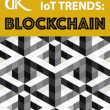

Had Mark Twain been reporting on the rise of the Internet of Things, he might have commented wryly that ‘the reports of its growth have been greatly exaggerated’, writes Carsten BrinkSchulte, the chief executive of Core Network Dynamics. (more…)
June 7, 2016
Posted by: George Malim

We all want to see our cities functioning better. With urban populations increasing rapidly, and 70% of the global population expected to be living in cities by 2050, we have to come up with better ways of making our cities more liveable, writes Richard Harris, solutions director for international public sector at Xerox. (more…)
June 2, 2016
Posted by: George Malim

The Internet of Things is one of the most interesting technological advancements we have today. And within this spectrum, the connected car is perhaps the most exciting and advanced ‘thing’ in that ecosystem, writes Mark Hughes, the chief executive of BT Security. Connected cars have a range of wildly clever features; from intelligent driver assistance and predictive systems that help bypass traffic jams, to sensors that help track driver behaviour and reduce emissions. (more…)
May 31, 2016
Posted by: George Malim

When it comes to technological trends, the Internet of Things (IoT) is a very big thing indeed. Approximately 3.9 billion connected things were in use in 2014. Gartner expects this figure to rise to at least 25 billion by 2020. Connected devices are certainly changing the way our global economy and societies function, and they are dramatically changing the rules for IT security, writes Myles Bray, the vice president of EMEA sales at ForeScout Technologies. (more…)
May 26, 2016
Posted by: George Malim

In the second part of his article on tackling waste in the industrial Internet of Things, David Stain, the industry marketing lead for manufacturing and field mobility at Zebra Technologies, detail how IoT can help. (more…)
May 24, 2016
Posted by: George Malim

From cars to kitchen appliances, warehouse management and agriculture to smarter cities, the pervasive opportunities presented by connected devices and the Internet of Things (IoT) to every imaginable industry are infinite. Even though we are still early in the adoption stages of IoT, there is widespread belief that we are teetering on the edge of an explosion that will make previous technology revolutions – such as the rise of social media – seem like small fry. If you think of the web browser as the first dimension of the internet and mobile the second, then IoT is the third, writes Matt Clarke, the chief technology officer at digital marketing, technology and commerce consultancy Amaze. (more…)
May 23, 2016
Posted by: George Malim

Hype: typically it’s a negative thing. But for those tired of hearing about the next big technology, keep reading. Why? Because the Internet of Things (IoT) is changing the ways of the retail and manufacturing industries, writes David Stain, the industry marketing lead for manufacturing and field mobility at Zebra Technologies in the first of a two part article. (more…)
May 20, 2016
Posted by: George Malim

As IoT becomes increasingly pervasive, a new and alternative services sector is evolving, called servitization – also known as outcome-based services, writes Joe Kenny, the senior director for Global Customer Transformation at field service management specialist, ServiceMax.
By integrating services with products, you can create bundles that are of greater value than products alone. As manufacturers move from being purely product providers to becoming service providers as well, it adds value to their products and generates additional revenue. In other words, service-based outcomes take you out of competing on price alone.
According to Ashton Business School, servitization delivers a 5-10% jump in annual services revenue, profits two to three times greater than those on product sales alone, cost reductions for customers as high as 30%, as well as the opportunity to increase service revenues even further by supporting existing third party or competitive products. This creates an ongoing relationship with the customer that effectively locks out competitors.
Machines are already able to self-diagnose themselves, and report back when they need servicing or require action to be taken to avoid breaking down. This is a game changer for any company with a service department, as well as the wider field service management industry. But shifting business models requires thought and planning. So let’s look at some of the key considerations on the business transformation journey to servitization.
First, validate your business model. Chances are you’ll be making potentially more money but in different ways which will require a rethink. Machines, products and consumers are now all able to communicate with each other in real time, which opens up a myriad of possibilities for monetising revenue in different ways.
Think through the customer experience, and look to add value or provide value in the ecosystem either upstream, downstream or both. By building a better customer experience that’s of value or creating more viability of an asset’s use, you’ll not only be able to unlock new value for your customer, but also potentially profit from it. Be careful not to create vulnerabilities or unnecessary technical baggage to a customer transaction or service. Opt for simple logical value. In my view, simple, reliable and consistent wins over cool every time so don’t over complicate things.
Second, look at security around how the data is collected, protected using encryption, stored and communicated. A good reference is The IoT Security Foundation, which is vendor neutral, non-profit and full of expert resources for knowledge sharing, best practice and advice.
Third, take a look at who owns the data captured and the consolidated trends. We now have laws that cover control data captured, data protection, ownership and the protection of personal information. Talk to your legal department and review these aspects, and include them in your end user agreements – clearly state what data is collected and how relates to protection and usage rules.
Fourth, ensure you understand the technology you are using. Have you designed for quality of reporting, and for failure, scalability, reliability? How will you know the sensors are reporting back with valid measurements? It’s really important to test, test and test again – everything from sensor locations, fixings, power supply, communication methods and circuit redundancy.
Fifth, check Industry 4.0 for ideas. In other words, check for standards and emerging templates or blueprints. You can be creative but it’s worth doing your research to get plenty of advice. Always build trial or proof of concept on small scale then methodically learn what business outcomes you can drive or improve – but keep a holistic focus on improving value. And consider how are you going to install, maintain, upgrade, retrofit, or decommission your solution, and once deployed, make sure you recalibrate your expectations on a continual basis.
There are a few obstacles to overcome, but the reality is we have been monitoring sensors in machines for years. As an industry, we already know what good, reliable data looks like and most companies are familiar with the thresholds of proper testing and validation.
The convergence of IoT and servitization is transforming business models in the service arena, opening new possibilities for proactive maintenance, prescriptive management and recall management. Your only decision is how to transform your business to take advantage of them.
May 19, 2016
Posted by: George Malim

In the first of a new series of articles on emerging IoT trends by Beecham Research – Phill Pexton, senior analyst, and Saverio Romeo, principal analyst, with the firm examine blockchain (more…)
May 17, 2016
Posted by: George Malim

According to reports published by ARUP the global Smart Cities Market is expected to grow to $1,134.84 billion by 2019. While this looks promising for all involved, writes David Rolfe, the Big Data Platform product manager at Openet, the challenges in supporting a connected city are a lot more complex than simply implementing the latest technology. (more…)
May 9, 2016
Posted by: George Malim